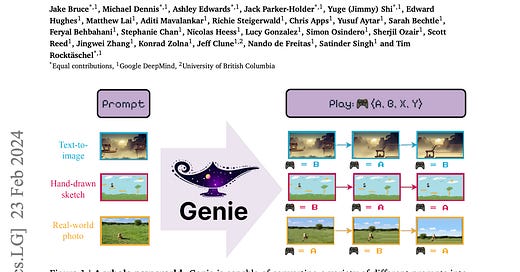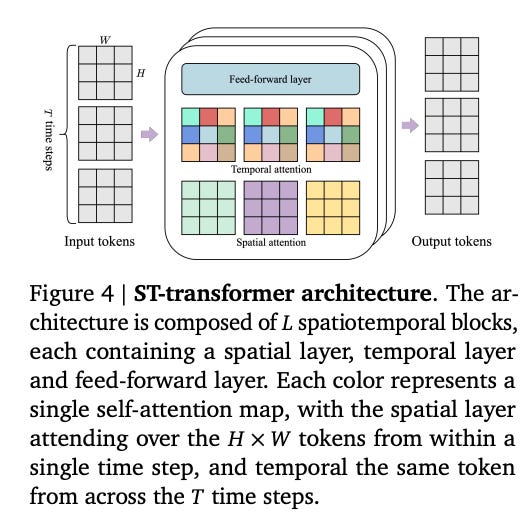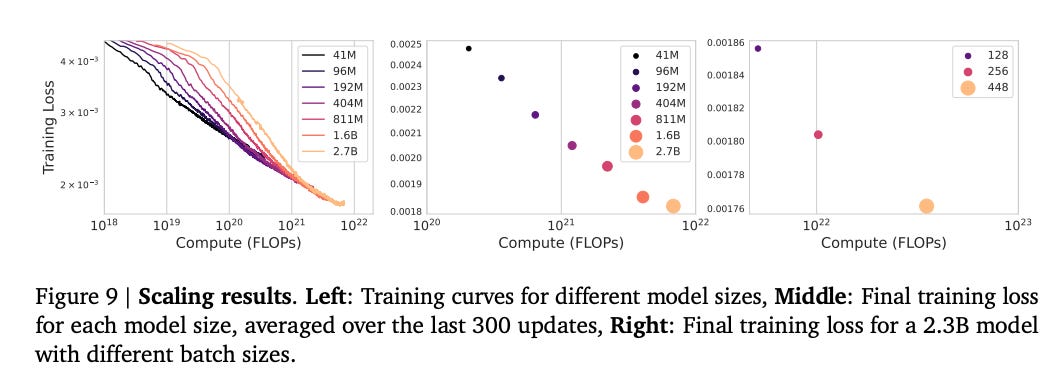About Genie:
Introduce Genie
In the digital era, artificial intelligence (AI) is advancing at an unprecedented pace, constantly breaking new ground. Recently, Google DeepMind has unveiled a groundbreaking generative interactive environment called Genie, a technological leap that has not only captured the attention of the tech world but also opened up new horizons for entertainment, education, and research.
Genie is a foundational world model with 11 billion parameters, capable of learning unsupervised from unlabeled Internet videos to generate interactive virtual worlds. These worlds can be described through text, synthetic images, photographs, and even hand-drawn sketches. The core of Genie lies in its latent action interface, which allows users to interact frame-by-frame with the generated environments without any real-world action labels or domain-specific requirements.
The architecture of Genie comprises a spatiotemporal video tokenizer, an autoregressive dynamics model, and a latent action model. These components work together to enable Genie to understand and simulate dynamic changes in videos. By employing Variational Quantum-VAE (VQ-VAE) technology, Genie compresses videos into discrete tokens, reducing dimensionality and enhancing video generation quality. Additionally, Genie utilizes a Spatial-Temporal Transformer (ST-transformer) architecture, which more effectively balances model capacity and computational constraints when handling video data.
The experimental results of Genie are impressive. A Genie model trained on a dataset of 2D platformer game videos can generate high-quality, controllable videos. Even when faced with inputs significantly different from the training dataset, such as images generated by text-to-image models, hand-drawn sketches, and real photos, Genie demonstrates strong generalization capabilities. Moreover, Genie can understand and simulate parallax effects in 3D scenes, which is particularly important for applications like platform games.
The potential applications of Genie are vast. It can be used not only in game design, allowing players to create and experience their own game worlds, but also as a foundational world model for training generalist agents. By learning latent actions from Internet videos, Genie can generate policies for reinforcement learning (RL) environments, which is crucial for training intelligent agents capable of performing well in diverse environments.
However, the researchers behind Genie acknowledge that there is room for improvement. For instance, Genie currently operates at about 1 frame per second, which is not efficient enough for real-time interaction. Additionally, Genie faces challenges in maintaining long-term consistency, as it can only remember 16 frames of history.
Despite these challenges, the introduction of Genie is undoubtedly a significant milestone in the field of AI. It showcases the immense potential of AI in understanding and generating complex dynamic environments and provides new directions for future research and applications. With continuous technological advancements, there is every reason to believe that Genie and its successors will bring even more surprises to humanity in the future.









